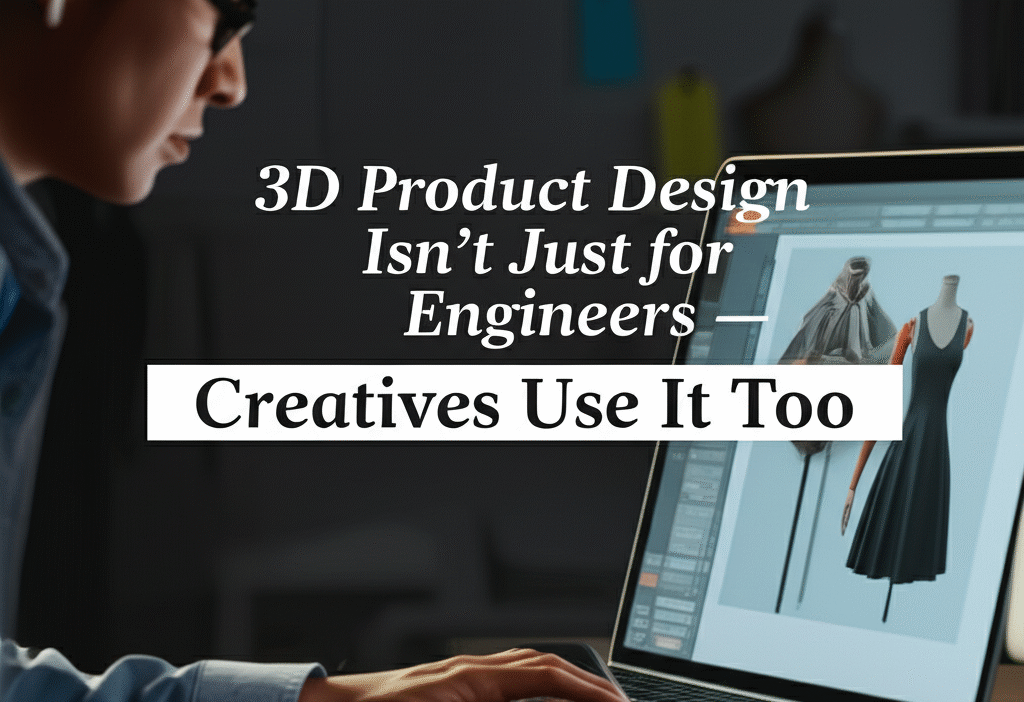When you hear the words “product design,” what do you imagine? Tools, machines, numbers? Maybe a lab full of engineers building parts?
That’s the image most students grow up with. We’re taught that anything ‘3D’ or ‘technical’ belongs to the realm of science — not the arts. But in today’s design world, that line no longer exists. 3D product design is not just a tool for building things; it’s becoming a language — and creatives are speaking it fluently.
In fact, some of the most beautiful, intuitive, and emotionally resonant products you see today come from people who think like artists — not technicians.
The Creative Shift in Product Thinking
Design has changed. It’s no longer just about function. It’s about experience, emotion, identity, and culture.
This shift means that even technical tools like 3D modeling are now in the hands of illustrators, fashion designers, set designers, and storytellers. Why? Because it allows them to shape emotion through form.
Let’s say you design a piece of furniture — not just for sitting, but to tell a story of comfort, heritage, or rebellion. The curves, textures, even shadows it casts, all add layers of meaning. And with 3D product design, you can test and sculpt that story until it feels right — before it ever exists physically.
The Myth: “I’m Not Technical Enough for 3D”
Many design students fear 3D because they think it’s meant for engineers. But creativity and curiosity matter far more than code.
3D tools today don’t just solve problems — they help ask better questions:
- What shape feels most human?
- How can I reduce waste and still make something bold?
- How does an object feel before it’s touched?
These aren’t technical questions. They’re artistic. And this is where creatives enter the product design process — not as outsiders, but as storytellers shaping the future of design.
The New Design Toolkit: What Creatives Actually Use
Let’s be real — no one wakes up an expert in 3D software. But tools like Blender, Gravity Sketch, Adobe Dimension, and Shapr3D are lowering the barrier.
What makes them work for creative minds is that they’re visual-first. You don’t need to understand every function. You start with intention and build gradually.
Just like sketching in a notebook, modeling in 3D becomes part of your creative thinking — a space to explore shapes, materials, light, even mood. The difference is, it’s responsive. It lets you see how your product will exist in space, time, and interaction.
That’s the power of merging art with 3D — it’s not about getting it “right.” It’s about discovering what feels real.
3D Product Design as a Space of Exploration
Here’s something most design schools don’t talk about: Design isn’t just problem-solving — it’s meaning-making.
Think of product design ideas not as solutions, but as questions in physical form.
For example:
- What if a water bottle didn’t just hold water, but encouraged you to drink more mindfully?
- What if headphones felt less like a gadget and more like a part of your outfit?
- What if packaging could evoke a sense of ritual every time you open it?
These ideas require more than measurements — they require imagination. And 3D product design is where that imagination begins to take shape.
Not Just Design — Culture, Emotion, and Identity
The most memorable designs aren’t remembered for how they function, but how they make us feel. Creatives understand this deeply.
In product design, especially in lifestyle and fashion spaces, 3D allows for experimentation with textures, color shifts, form rhythm, and even material storytelling. A 3D-modeled shoe isn’t just a sketch — it’s a form that expresses speed, calm, rebellion, or tradition.
This is where creatives shine — not in making things that work, but in making things that mean something.
The product design process today isn’t linear. It’s a cycle of exploring, questioning, reshaping — and creatives are at the heart of that movement.
So, Why Learn 3D as a Creative?
Because the future of design belongs to those who can merge feeling with form.
You don’t have to be a software wizard. What you need is:
- The courage to try
- The willingness to fail
- The hunger to tell stories in new dimensions
Learning 3D is less about becoming “technical” and more about expanding your canvas. It allows you to test materiality, scale, shadow, interaction — all in ways a flat drawing can’t.
And the world needs more designers who can think this way. Creatives who ask deeper questions, and then model their answers in shape, color, texture, and emotion.
Final Thought: 3D is a Mindset, Not Just a Skill
You don’t need permission to enter this space. Whether you’re a student of fashion, interior, graphic design, or even theater — 3D product design offers you a new language.
A language that’s not cold and technical, but fluid and expressive. A language that lets you sculpt not just products, but stories people want to touch, use, and remember.
So no — 3D isn’t just for engineers. It never was.

